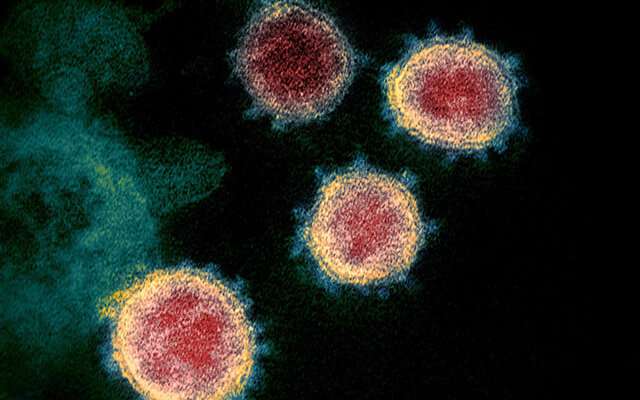Specific kidney proximal tubular injury caused by SARS-CoV-2

A French study investigated acute Fanconi syndrome as a kidney injury associated with COVID-19. The hallmark of the syndrome is increased excretion or loss of certain substances (such as protein, phosphate or glucose) in urine. This renal dysfunction often precede acute kidney injury and disappears again when the kidneys recover.
SARS-CoV-2-associated acute kidney injury (AKI) is one of the more frequently encountered organ involvements in COVID-19—in as many as 80% of critically ill patients, according to a recent study. The virus infects the cells of the renal tubule system (proximal tubule cells), inter alia, because tubular cells express the ACE2 cell surface receptor that SARS-CoV-2 uses to invade host cells. The proximal tubular cells normally ensure (by reabsorption into blood) that important substances are not excreted in urine and are thus lost to the body (e.g., glucose, bicarbonate, potassium, phosphate, amino acids/proteins). Proximal tubule injury can cause renal Fanconi syndrome, a disease in which said substances are lost in urine. The consequences or symptoms are disorders of mineral balance, accompanied by a reduction in bone density due to phosphate loss, bone pain, hyperacidity of the blood (acidosis, i.e., lowered pH), frequent urination (polyuria), dehydration, increased thirst, physical weakness (loss of cellular energy due to phosphate deficiency).
A study conducted in Nancy, France, investigated the hypothesis that, depending on the severity of SARS-CoV-2 infection, Fanconi syndrome might occur as an indication of renal tubule involvement. Data from 42 hospitalized COVID-19 patients (all with positive throat swab) who had no previous kidney disease were analyzed retrospectively. The mean follow-up was 19.7 (±12) days. It was found that a total of 75% of the patients had (incomplete) Fanconi syndrome (at least two tubular abnormalities). The most frequently presented features were proteinuria (88%, n=35), phosphate loss in urine (55%, n=22), increased uric acid excretion (43%, n=17) and glycosuria (30%, n=12). Intensive care patients were more frequently affected (96% vs. 62%) and were also more severely affected by proteinuria (protein in urine 844±43 vs. 350±221 mg/g) and by AKI. A noteworthy finding was that Fanconi syndrome preceded severe AKI in 7/8 (88%) of the patients. Five of the AKI patients required dialysis; two died (after 13 and 27 days); one patient was dialysis-free after one week and two patients were still on dialysis at the end of the follow-up. A total of 7/42 patients died (including six intensive care patients with AKI), 24/42 could be discharged (including 12 intensive care patients) and 11/42 patients were treated as in-patients for a further 34 (±4.3) days. Clinical improvement of patients was also accompanied by a reversal of renal Fanconi symptom.
"The proximal renal tubules seem to be a specific target of SARS-CoV-2 because of their ACE2 receptors, and we see verification of our hypothesis that this is the cause of the tubular disorders and AKI that so many of our COVID-19 patients have developed", explains Dr. Raphaël Kormann. "Although by no means all COVID-19 patients with Fanconi syndrome developed AKI, we believe that the four markers (increased urinary excretion of protein, phosphate, uric acid and glucose), if a new occurrence, indicate specific proximal-tubular injury from which AKI can develop", says Kormann. "This should be subjected to further systematic investigation—with regard to the significance of Fanconi syndrome as a biomarker of tubular cell infection and as a potential predictive prognostic marker."
"It must also be assumed that there is an increased risk of subsequent kidney disease after SARS-CoV-2-associated Fanconi syndrome, as is also the case after acute kidney injury", added Professor Alberto Ortiz, Editor-in-Chief of the CKJ. "For that reason, patients should always be followed-up nephrologically so that associated conditions are detected in time."
More information: Raphaël Kormann et al, Coronavirus disease 2019: acute Fanconi syndrome precedes acute kidney injury, Clinical Kidney Journal (2020). DOI: 10.1093/ckj/sfaa109



















